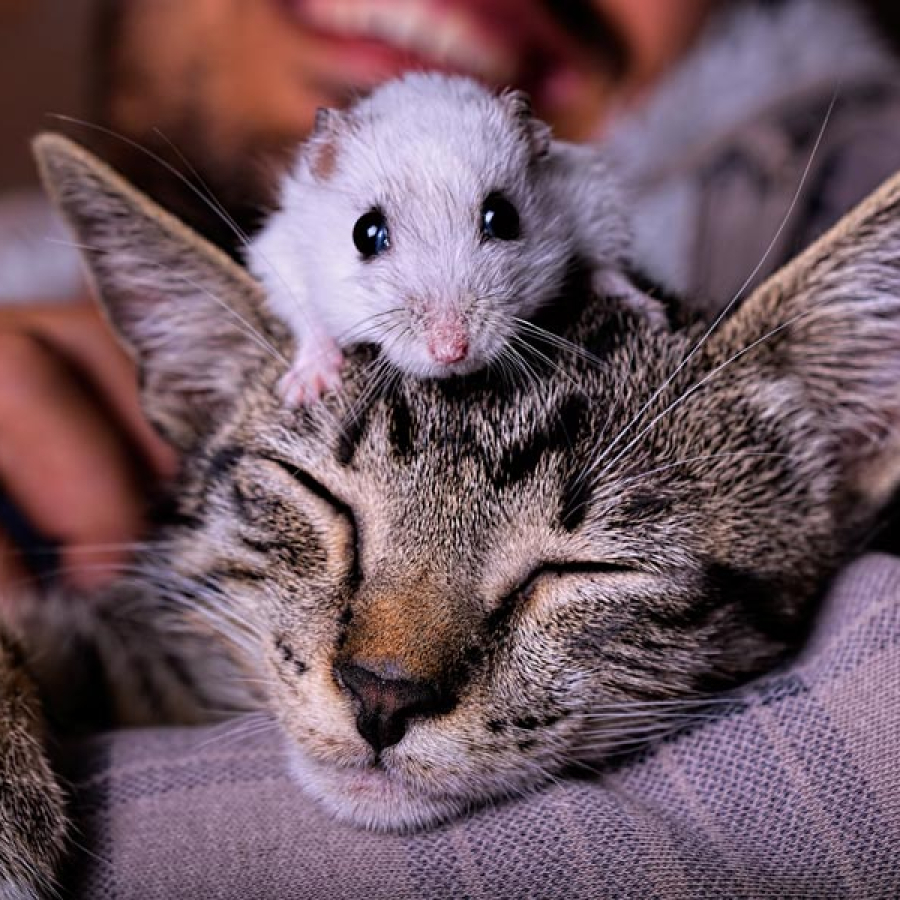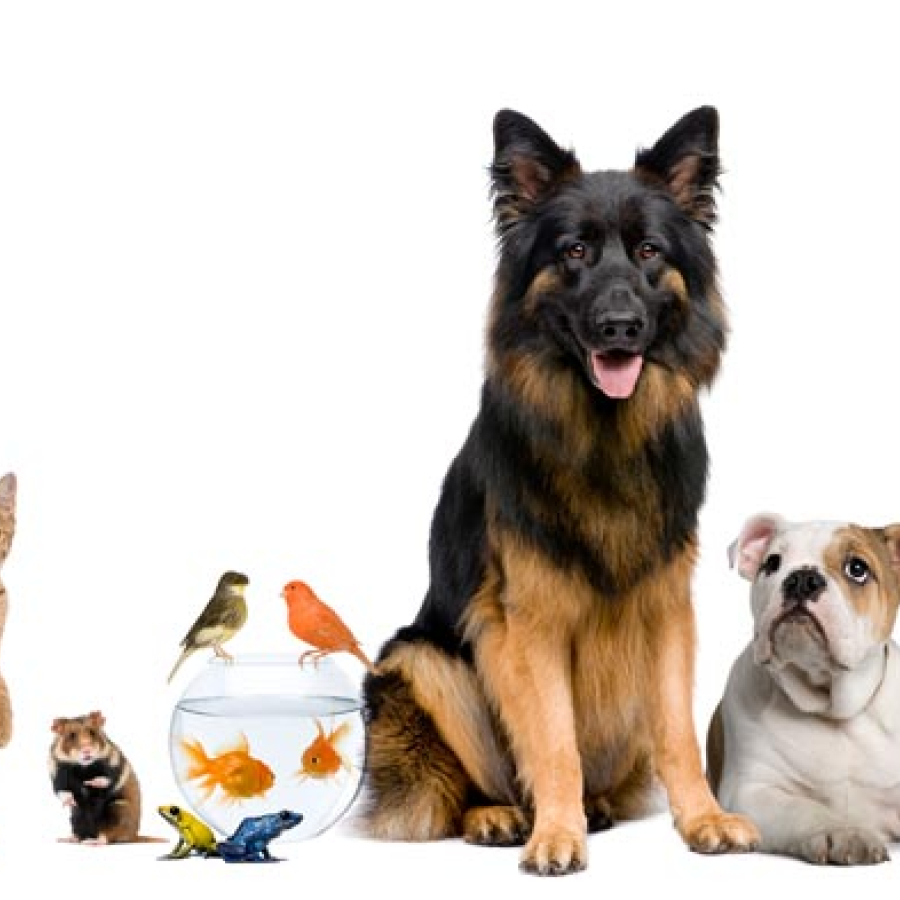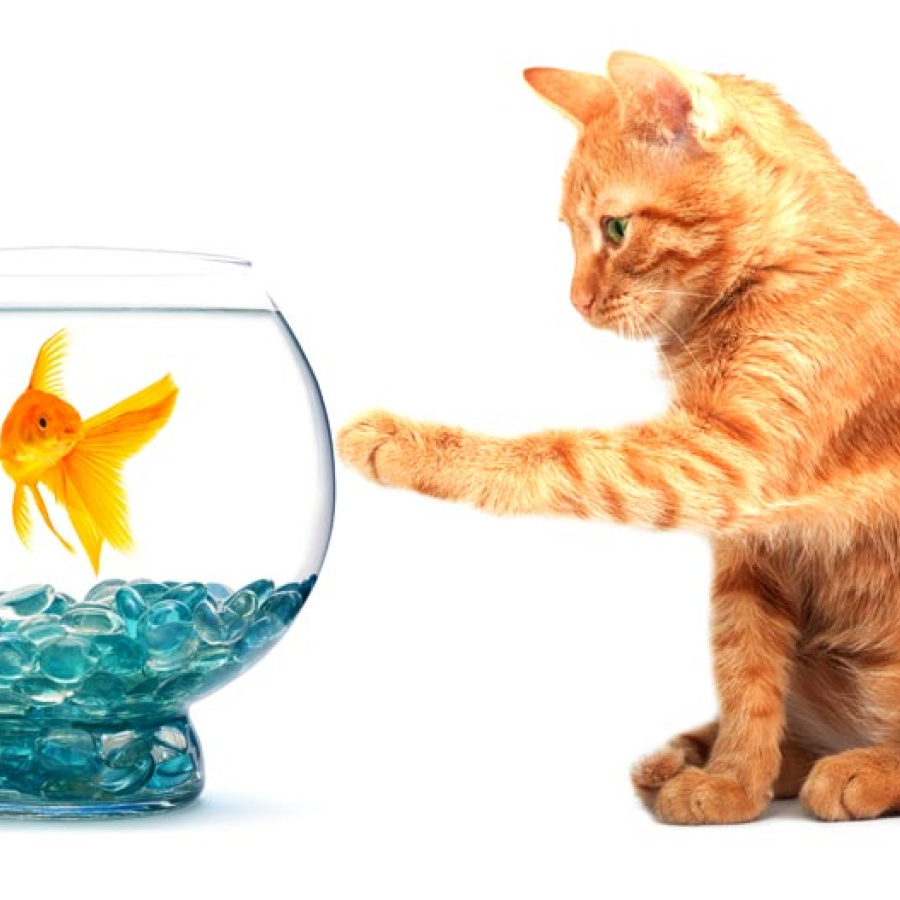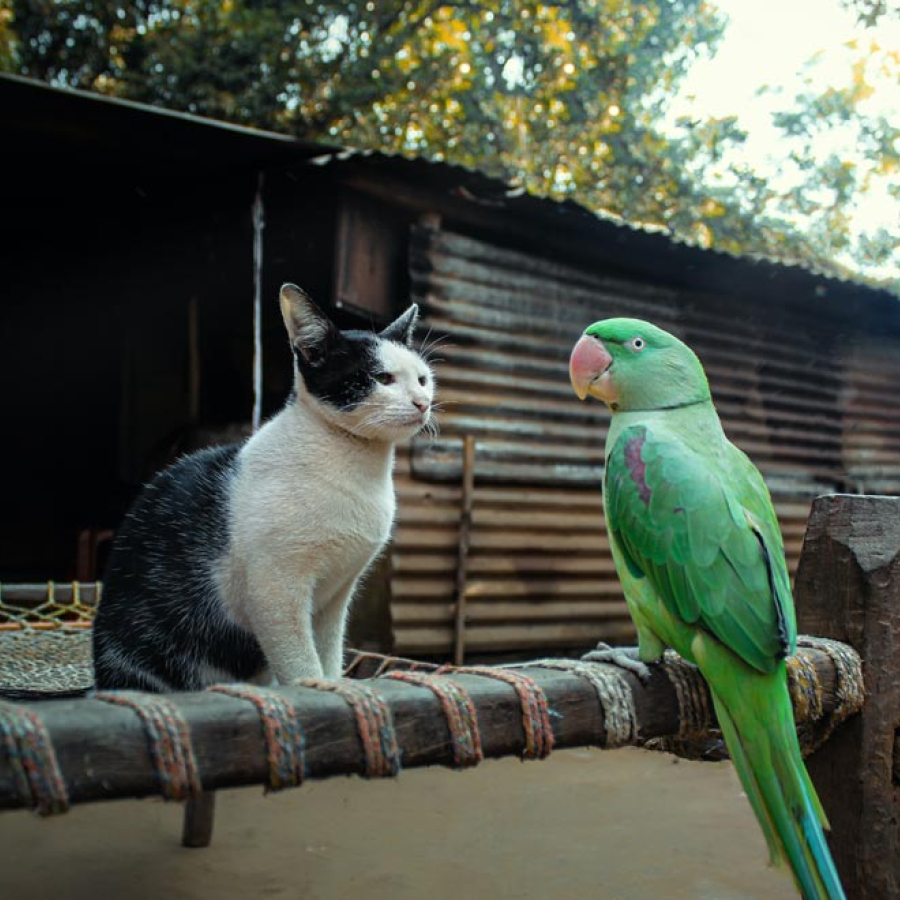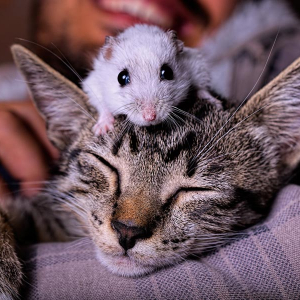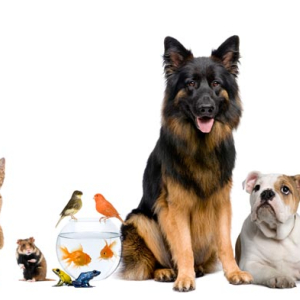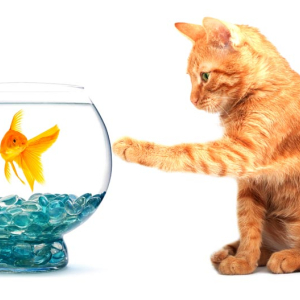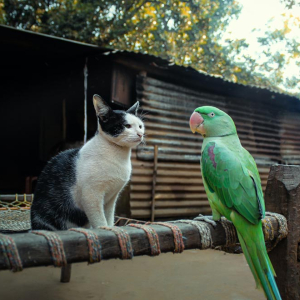Growing up, watching cartoons of cats, dogs, birds and mice cohabitating unsuccessfully was more a game than a problem. The grey and white tomcat always chased the brown mouse. Their antics would wreak havoc throughout the house and would catch the attention of a human. As the grey and white kitty was reprimanded and kicked out of the house, the brown mouse would laughed until he felt his friend was in danger. In the end, they were always friends and would enjoy the game each day. Logically, we’d believe that there might be truth in the saying that opposites attract, therefore we might believe a cat and mouse could cohabitate as friends. Unfortunately, instinct is stronger than logic and many details should be considered when establishing a multi-species home.
What Type Are You? Are you a dog person? Cat person? Or simply a pet person? Some people feel strongly about their pet preference. Dogs tend to be great friends that love you unconditionally and always want to be with you. When you get home, your dog’s tail is wagging while running to you, excited that you’ve returned. Your canine friend is always ready for a walk, car ride or simply lying in your lap or by your feet. On the other hand, a cat’s personality can vary greatly. Cats are known to be more independent, but they love their people. Some kitties greet you upon arrival while others give you a glance from the comfort of their napping spot. Life in these homes is usually peaceful and does not bear concern about predator and their prey.
On the other hand, there are pet people. Pet people tend to not only love all living things but want multi-species homes. Of the 44 percent of multi-species households in the United States, a majority are homes to cats and dogs, but it doesn’t stop there. Domesticated pets include various birds, hamsters, gerbils, rats, guinea pigs, mice, rabbits, ferrets, snakes, lizards, turtles and frogs just to name a few. In the wild, most of these pets are natural predators or prey, but it’s possible to nevertheless create a harmonious home.
Cats: Predator or Prey? When considering a multi-species home, understanding your pet’s ranking in the predator/prey hierarchy is necessary. Before cats were domesticated, they needed to hunt to eat—just as lions and tigers, their larger cousins. Despite domestication, cats retain their hunting skills. Kittens learn to hunt from momma cat and their litter mates. Cats grow up learning various hunting strategies, such as ambushing, stalking, pouncing and fishing. An ambush begins with the kitty crouching low and observing their prey. Once they see their prey is in the perfect spot, they will jump to capture it. Stalking prey to pounce on it is a slightly different tactic, as the kitty will crouch low and then will move about to stalk its prey. Once the prey is close enough, the kitty will pounce on it. Of course, fishing is a favorite pastime for many kitties. Cats are known for their dislike of water, and so they’ll watch from the edge and use their paw to catch fish. Other kitties, like Maine Coons, enjoy the water and may jump in to swim and go fishing. If you have an outdoor cat, you will see these traits used as your cat brings home lizards, birds, squirrels, rats or rabbits. Indoor cats continue to hunt but are usually limited to cat toys or the occasional bug or gecko from outside.
Despite cats’ predatory reputation, they are prey to animals like coyotes, dogs and certain birds. Their natural, well-developed sense of fear helps protect them from such predators. Often, cats are not comfortable around strangers, startled by unexpected noises, and dislike changes in their routines or environment. Cats often hide to protect themselves from fearful situations. Providing your cat with a safe space is always necessary whether they are outdoor or indoor cats. Now that we have a clear understanding that cats are both predators and prey, we can consider other species for the household.
Can Cats and Dogs Be Friends? Since cats and dogs are the most likely pair in an average American household, let’s find out ways to help make life peaceful. When starting the journey of getting a cat and dog that can cohabitate, consider the breed characteristics of the dog and cat respectively. Some dogs naturally have a strong predatory drive and may not be a good fit. If you are selecting a high-energy dog, then you may want to look for a high-energy cat. Starting the process when the cat and dog are still young can simplify the process. Also, be ready to enroll in obedience training with your dog. Not only will this help your relationship with your dog, but it will help you train your dog phrases like “Leave it” when teaching your dog how to behave with your cat. Be sure to give your cat a safe space. Some give their kitties their own room for their litter box, cat tower, food and water. You can also give your kitty space up high where the dog cannot reach, like a cat tower or kitty condo. If you are introducing a new pet to an existing pet, you may want to keep the new pet confined to one room. This way they can get used to each other’s smells before meeting face to face. Introductions can take two to three weeks depending on their personalities, so be patient. If everything goes as planned, you’ll have two best buds in no time.
Can Cats Befriend Small Animals? When you consider smaller animals, remember that cats are predatory. Do your research and consider the space needed to set up a habitat for small creatures like birds, hamsters, lizards, snakes, fish and so on. It is important to consider how to make the habitat safe and inaccessible to your cat. A simple swipe of a cat’s claw can be fatal to a small bird. Be sure to place bird cages high and away from places where your kitty can jump. Also, be sure the bars of the cage are close enough together so your kitty’s paws cannot reach through. Aquariums are beautiful and relaxing but be sure your kitty can’t stick his paw in and go fishing! When making any small animal additions, be sure to discuss options with your local pet store so you can have a harmonious multi-species household.
Cats are fascinating pets. Their curiosity and instinctual hunting skills make for a fun companions and their love for their people allows for plenty of cuddles. With patience and the right tools, you can have a harmonious multi-species household and love all creatures great and small.
What Type Are You? Are you a dog person? Cat person? Or simply a pet person? Some people feel strongly about their pet preference. Dogs tend to be great friends that love you unconditionally and always want to be with you. When you get home, your dog’s tail is wagging while running to you, excited that you’ve returned. Your canine friend is always ready for a walk, car ride or simply lying in your lap or by your feet. On the other hand, a cat’s personality can vary greatly. Cats are known to be more independent, but they love their people. Some kitties greet you upon arrival while others give you a glance from the comfort of their napping spot. Life in these homes is usually peaceful and does not bear concern about predator and their prey.
On the other hand, there are pet people. Pet people tend to not only love all living things but want multi-species homes. Of the 44 percent of multi-species households in the United States, a majority are homes to cats and dogs, but it doesn’t stop there. Domesticated pets include various birds, hamsters, gerbils, rats, guinea pigs, mice, rabbits, ferrets, snakes, lizards, turtles and frogs just to name a few. In the wild, most of these pets are natural predators or prey, but it’s possible to nevertheless create a harmonious home.
Cats: Predator or Prey? When considering a multi-species home, understanding your pet’s ranking in the predator/prey hierarchy is necessary. Before cats were domesticated, they needed to hunt to eat—just as lions and tigers, their larger cousins. Despite domestication, cats retain their hunting skills. Kittens learn to hunt from momma cat and their litter mates. Cats grow up learning various hunting strategies, such as ambushing, stalking, pouncing and fishing. An ambush begins with the kitty crouching low and observing their prey. Once they see their prey is in the perfect spot, they will jump to capture it. Stalking prey to pounce on it is a slightly different tactic, as the kitty will crouch low and then will move about to stalk its prey. Once the prey is close enough, the kitty will pounce on it. Of course, fishing is a favorite pastime for many kitties. Cats are known for their dislike of water, and so they’ll watch from the edge and use their paw to catch fish. Other kitties, like Maine Coons, enjoy the water and may jump in to swim and go fishing. If you have an outdoor cat, you will see these traits used as your cat brings home lizards, birds, squirrels, rats or rabbits. Indoor cats continue to hunt but are usually limited to cat toys or the occasional bug or gecko from outside.
Despite cats’ predatory reputation, they are prey to animals like coyotes, dogs and certain birds. Their natural, well-developed sense of fear helps protect them from such predators. Often, cats are not comfortable around strangers, startled by unexpected noises, and dislike changes in their routines or environment. Cats often hide to protect themselves from fearful situations. Providing your cat with a safe space is always necessary whether they are outdoor or indoor cats. Now that we have a clear understanding that cats are both predators and prey, we can consider other species for the household.
Can Cats and Dogs Be Friends? Since cats and dogs are the most likely pair in an average American household, let’s find out ways to help make life peaceful. When starting the journey of getting a cat and dog that can cohabitate, consider the breed characteristics of the dog and cat respectively. Some dogs naturally have a strong predatory drive and may not be a good fit. If you are selecting a high-energy dog, then you may want to look for a high-energy cat. Starting the process when the cat and dog are still young can simplify the process. Also, be ready to enroll in obedience training with your dog. Not only will this help your relationship with your dog, but it will help you train your dog phrases like “Leave it” when teaching your dog how to behave with your cat. Be sure to give your cat a safe space. Some give their kitties their own room for their litter box, cat tower, food and water. You can also give your kitty space up high where the dog cannot reach, like a cat tower or kitty condo. If you are introducing a new pet to an existing pet, you may want to keep the new pet confined to one room. This way they can get used to each other’s smells before meeting face to face. Introductions can take two to three weeks depending on their personalities, so be patient. If everything goes as planned, you’ll have two best buds in no time.
Can Cats Befriend Small Animals? When you consider smaller animals, remember that cats are predatory. Do your research and consider the space needed to set up a habitat for small creatures like birds, hamsters, lizards, snakes, fish and so on. It is important to consider how to make the habitat safe and inaccessible to your cat. A simple swipe of a cat’s claw can be fatal to a small bird. Be sure to place bird cages high and away from places where your kitty can jump. Also, be sure the bars of the cage are close enough together so your kitty’s paws cannot reach through. Aquariums are beautiful and relaxing but be sure your kitty can’t stick his paw in and go fishing! When making any small animal additions, be sure to discuss options with your local pet store so you can have a harmonious multi-species household.
Cats are fascinating pets. Their curiosity and instinctual hunting skills make for a fun companions and their love for their people allows for plenty of cuddles. With patience and the right tools, you can have a harmonious multi-species household and love all creatures great and small.
Tagged in Kitty Korner in our Spring 2023 issue
